- Home
- Kathy Reichs
The Bone Code Page 6
The Bone Code Read online
Page 6
Vislosky’s chin came up, and her head tipped sideways. “How common is it?”
“Elbows account for about ten percent of all fractures in children.”
Vislosky wrote something.
“She may have had short, dark hair tinted pink,” I added, recalling the “threads” Klopp had discovered.
I stopped, feeling the same ache as during the autopsy. The youngster had broken her arm, perhaps turning a cartwheel or tumbling from a skateboard. She’d dyed her hair an outrageous cotton-candy pink, experimenting with the image she’d present to the world. Examining her bones, I’d sensed a joie de vivre mixed with adolescent insecurity. I’d been there once, in that awkward half-child, half-woman stage. So much hope. So much to live for. So much snuffed out.
Vislosky’s question brought me back.
“And the older kid?”
“She had an abscess near her upper second left molar, active when she died, so she might have been in some pain. Doubtful she was being treated by a dentist.”
Two desks over, a phone rang.
“Each suffered a single gunshot wound to the occipital.”
Vislosky’s eyes rolled up.
“The back of the head. The trajectory suggests the victims were on their knees, the shooter standing behind them.”
“Execution-style.”
Flash tableau of the woman and child in Montreal. I forced it aside.
“Looks that way. I found no evidence of violence elsewhere in either skeleton, other than postmortem.”
“After they’d been shot.”
“Yes.” The phone went silent. “Both victims had their teeth knocked out or pulled and their fingers cut off just above the knuckles.”
“Cut with what?”
“An implement with a non-serrated blade. My guess would be pruning shears. Unfortunately, that’s all I can say.”
“What else?”
“That’s it.”
“How long do you think they were in that container?”
“Hard to be exact. One to five years?”
“What about all that barnacle business?”
“That will take time. And different expertise.”
“Who do I contact?”
“That’s on you.”
“The plastic?”
“Ordinary polyethylene sheeting. Ditto the wire. Common eighteen-gauge electrical available in any hardware department.”
Vislosky tossed her pen onto the desktop, leaned back, and stretched out her legs. They went a very long way. A beat of silence, then, “You got all this from the bones?”
“Except for the intel on the availability of the wire.”
“I’ll be damned.”
Vislosky picked up and waggled the pen back and forth in her fingers. They were very long fingers. Then she reached her free hand across the desk and smiled ever so slightly.
“I maybe was abrupt at the morgue yesterday.” No apology, just laying it out there. “First name’s Tonia.”
“Temperance Brennan. Tempe.” We shook, my hand disappearing inside hers. “Tonia is unusual.”
“My mama heard it somewhere, probably wrote it down wrong. What the hell. She wanted me to be a doctor. I wanted to be a cop.”
“You persisted.”
“It’s what I do.” Vislosky pistol-pointed one ET finger at me, picked up and opened a sky-blue folder.
“After leaving the autopsy yesterday, I started hunting through MP reports. Went back five years looking for kids fitting your profiles. Got nada.”
“How wide did you go?”
“No hits in the Charleston area, in South Carolina, North Carolina, or Georgia. Now I can refine my search. The medical info’s gold. I’ll contact hospitals, have them check their records back five years for any kid presenting with a”—her eyes rolled to her notes—“lateral condylar fracture.”
“They’ll love that.”
“I’ll reach out to the FBI, float queries to schools, check with the NCMEC.” Vislosky referred to the National Center for Missing and Exploited Children.
For the next ten minutes, she laid out her game plan. It all sounded sadly familiar.
When Vislosky finished, I said, “These murders may have broader ramifications than you realize.”
“Meaning?”
I told her about the Montreal case.
Her reaction was what I expected.
8
FRIDAY, OCTOBER 8
Ryan called around five thirty. I was working at my laptop on the back deck. Anne was below me in the yard, arguing with a worker. Loudly.
“Bonjour, ma chère.”
“Hey.”
“What’s all the yelling?”
“One of Anne’s landscapers found a snake in a clump of sea oats. He wants to kill it. She’s advocating for catch and release.”
“What kind of snake?” Sounding like his sympathies lay with the guy with the rake.
“A harmless little ole blacksnake.” Doing my best Anne imitation, at a much lower volume.
“What are you up to?” Ryan asked.
“Creating reports for my coroner friend Herrin and that lawyer Thorn. While everything is fresh in my mind.”
“And a fresh mind it is.”
“Were you able to pull the file?”
“Tell me I’m a genius.”
“You’re a genius.”
“Tell me I’m your hero.”
“What did you find?”
“Babe.” Faux wounded.
“You’re my hero. What did you find?”
“Toute la patente.”
“The whole file?”
“La totale.”
“Ryan.” A note of impatience.
“Detectives’ notes and reports, anthropologist’s report, photos, some news clippings, the—”
“Is the file huge?” Totally psyched.
“No.”
“Can you scan and send it to me?”
“Already in the works.”
“You’re my hero.”
“Not an easy mission.”
“Am I so hard to please?”
“No comment. But this should delight you. I also pulled up info on the guy who got broiled in his car.”
“You think he’s relevant?”
“Mostly I was curious. It bugged me that I couldn’t remember how that investigation went down.”
“Weren’t you on special assignment a lot back then?”
“Yes.” I heard a page flip. “The victim was ultimately ID’d by dental records. Jean-Pierre Tremblay from Sorel. The trail dead-ended for five years, then the cold-case unit reopened the investigation.”
“Why?”
“I don’t know. Anyway, it turned out Tremblay’s common-law wife, Sonja, had a lot of time to think while hubby was in the slammer. Sonja decided she was over being Jean-Pierre’s punching bag. Also, she’d found a new squeeze.”
“Let me guess. Sonja and her new sweetie devised a plan.”
“They shot Jean-Pierre within days of his release. Torched the car to make it look like a biker hit.”
“You have to give them credit for keeping up with the news.”
“Indeed.”
“Were Sonja and company charged?”
“Here’s the mother lode of all karma. Their truck was pancaked on a railroad crossing a year after they popped Jean-Pierre.”
“Both were killed?”
“Quite thoroughly.” I heard a chair squeak. “You should get the file on the container vics this evening.”
“Really, Ryan. I owe you.”
“When might you deliver?” Voice husky and not at all subtle.
“I’m not due at the lab for a couple of weeks.”
“Not sure I can wait.”
“I know you’ll keep busy.”
“Got a call today from a guy in Vermont.”
“You are one popular PI.”
“It’s that genius thing I’ve got going.”
The shouting had stopped, a
nd Anne was clumping up the stairs.
“I’ll watch for your email.”
“Ciao.”
“Ciao.”
“That moron has the brains of a blueberry pancake.” Anne’s hair was in the last hurrah of a hasty updo.
“He’s a yard guy.”
“Exactly. Which means he doesn’t chair the committee on what fauna lives and what dies. Not on my property.”
“Where is the serpent in question?”
“The tree trimmer helped me trap him in a seed bag. Promised to drive him over to the marsh.”
“Can blacksnakes survive in salt water?”
Anne just looked at me. She had a smear of what looked like guacamole on her right cheek.
“I’m sure Señor Snake will prosper in his new home,” I said. “What should we do for dinner?”
“I’m cooking.”
Oh, boy.
I went back to my report.
An hour later, Anne called me inside. She’d made shrimp and pimiento cheese grits, a dish guaranteed to raise my cholesterol level.
“You got a lot done,” I said, adding crustaceans to the orange carbs heaped on my plate.
“Not easy when the help has a collective IQ that suggests they need weekly watering.”
“Were you outside all day?”
“A goodly part. But not all. I did some research. You’re going to light right up when you hear what I found.”
“What kind of research?”
“On death masks.”
I must have looked puzzled.
“Polly Beecroft? The photos?” she prompted.
“Right.”
“Lord a’mighty, Tempe. Did you forget about that sweet old lady?”
“Of course not.” Given the hurricane and the container case, I had.
“Hold on.”
Anne left the table, returned moments later with her laptop. Which she deposited on a rather large glob of grits.
“OK. The practice of preserving faces in wax or plaster, sometimes bronze, began way back in antiquity. You’ve seen pictures of Tutankhamen’s mask, right?”
“I’ve seen the real thing.”
“Of course you have.” Rolling her eyes. “Tut’s was a funerary mask. Well-heeled Romans also made masks but for different reasons. To display their ancestors, maybe even to worship them, I’m not totally clear on that.”
Anne stopped to pop a shrimp into her mouth. Chewed.
“The Victorians were obsessed for a while. Far as I can tell, a lot of it had to do with something called phrenology. Ever hear of that?”
“Phrenologists claimed you could determine intellect and personality based on head shape and features. It was total bunk.”
“Right. It started with this German doctor, Franz Joseph Gall. Gall came up with the theory that lumps and bumps on the head could be used to determine a person’s character. Sounds wackadoo, but during phrenology’s peak popularity, roughly from the 1820s into the 1840s, a potential employer could actually demand a character reference from a phrenologist.”
“Seriously?”
Anne nodded. “As you say, pure rubbish, but it led to folks making copious masks. This Brit, James De Ville, collected more than two thousand of the things. Not all were created because of phrenology, of course. Some were made as templates for people wanting their portraits painted—”
“What does this have to do with Polly Beecroft?” I interrupted. A bit brusque, but we’d finished eating, and I was anxious to check my in-box for Ryan’s message.
“I’m getting to that.” Anne worked a key sequence, verified something on her screen. “Princeton University has a collection of death masks. So do Edinburgh University’s Anatomy Museum and Scotland Yard’s Crime Museum. The Victorians were obsessed with gruesome murders, so a shit ton of masks were made on executed criminals. Ever hear of William Burke?”
“Burke and his buddy, William Hare, robbed graves, then turned to murder to provide cadavers to medical schools.”
“And quid for their own pockets. Anyway, his mask is out there.” More keystrokes. “Some of these things have become crazy valuable. A bronze mask of Napoleon, made shortly after he died in 1821, sold in 2013 for about two hundred twenty thousand dollars.”
My eyes drifted to the wall clock over Anne’s shoulder. She noticed.
“Don’t get your panties in a twist. I’m getting to the good part.”
“I’m listening.”
“Dante, Mary, Queen of Scots, John Keats, Napoleon, Oliver Cromwell, William Blake, Beethoven, John Dillinger, James Dean—you’d be amazed how many people have been masked. And not just celebs.
“For years, University College London had a collection of thirty-seven heads. No one knew who they were. For a while, they were lent out to people studying art to use as models. Then, in the 1990s, some students found a publication titled Notes Biographical and Phrenological Illustrating a Collection of Casts by Robert R. Noel.”
“The UCL masks originally belonged to Noel?”
“Yep. Apparently, there used to be more—about forty-seven, including a bunch of skulls.”
“Over the years, specimens went missing.” I was getting the drift.
“Bingo. These days, a Brit named Nick Booth collects death masks. He’s offering a ‘skull amnesty.’ ”
“A what?”
“Booth is saying that if you went to the Slade School of Art in the ’eighties and pinched one of Noel’s little beauties, you can return it to him, no questions asked.”
Anne closed her Mac and looked at me expectantly.
“You’re thinking the mask in Beecroft’s photo could be one of those missing from Noel’s collection?”
“Didn’t you say Polly’s sister was an artist?”
“Harriet. She was a painter.”
“Could Harriet have studied in London in the ’eighties?”
I did some quick math.
“It’s possible. But—”
“Think about this. The masks in Noel’s collection were divided into two categories: intellectuals versus criminals and suicides.”
“Speaks volumes about attitudes toward suicide at the time.”
“What if the woman in the mask was Beecroft’s great-aunt and she killed herself?”
I could think of no response.
“And here’s another interesting fact I picked up. Masks weren’t made only by phrenologists or as models for portraits. There was one other reason.”
She left me in suspense for a moment, then unveiled her discovery.
“Sometimes they were made on unidentified bodies.”
“So that relatives of missing persons could view the masks at the morgue.”
Anne nodded solemnly.
“Not bad, Annie.”
“I’ll stay on it.”
I didn’t doubt she would.
Like a hound on a sirloin.
* * *
Thirty minutes later, table cleared, dishes loaded into the Bosch, Birdie and I retreated to my room. As before, I opened the sliding glass door. Drawn by the call of the wild, the cat wandered out onto the balcony.
Sitting cross-legged on the bed, I booted my Mac. The Atlantic was feeling friskier tonight, so I worked to the sound of waves crashing and foam fizzing across the sand. To the cries of gulls sharing avian gossip. Perhaps complaining about the shortage of fish.
Ryan’s email had landed. I downloaded and peeked at its two attachments. One folder contained documents, the other photos.
I started with a quick inventory of the former. The items included the following: The scene report. Scores of witness interview summaries. Forms listing evidence and property recovered and analyzed. Notes made by Ryan, the lead detective, and two other members of the task force, both SQ. Ryan’s overview of the investigation. A report on a snail. A report on water hydraulics in the St. Lawrence River. Reports by the pathologist, myself, and the coroner.
Leaving the documents for later, I turned to the second folder
, thinking pictures might kick-start my recall more vividly than text.
Ryan had scanned collections of photos from four separate packets. One set was produced by the SQ crime-scene unit that processed the scene. One came from Pierre LaManche, the LSJML pathologist who performed the autopsy. One came from me. The fourth series I wasn’t sure about. I left it for last.
I was sadly correct about the impact of visuals. Clicking through the images, the whole ugly mess came thundering back: The container gouged into a muddy beach. The algae-slimed wire and plastic sheeting. The mottled bones. The severed phalanges. The bullet holes, dark and round and lethal. The little fake emerald ring.
It was all too much to block out. I saw the woman and child down on their knees. Imagined the girl quickly palming her treasure into her mouth.
The usual wrenching questions pummeled my brain. Were the child and the woman shot together? Did they plead for their lives? Who was killed first? Did the child know she was going to die?
I thought of my daughter, Katy, at that age. Wondered. Did the child understand death? What does one know of mortality at age ten?
Banishing these unbearable thoughts, I turned to the final series. Those images were the most heartbreaking of all.
The desolate cemetery on rue Sherbrooke, Le Repos Saint-François d’Assise. The row of markers, none bearing a name. The forlorn inscriptions.
LSJML-41207 Os non identifiés d’une femme. LSJML-41208 Os non identifiés d’un enfant.
Unidentified bones of a woman. Unidentified bones of a child.
The pain felt as sharp as on the day I stood at that grave.
Brushing a tear from my cheek, I remembered Anne’s suggestion.
I made a decision.
9
SATURDAY, OCTOBER 9–SUNDAY, OCTOBER 10
Despite the calming lullaby of the waves, I slept poorly. A million images and worries ricocheted in my brain. Bones. Barrels. Beecrofts. Birdie. What to do about the cat if I followed through with my plan?
At six thirty, I gave up, donned running gear, yanked my hair into a pony, and headed outside. The tide was low, the sun barely cresting the horizon. The sea and shore glistened rosy bronze in the low, angled rays.
The beach was almost empty. Pounding along, I passed a few dog walkers playing fetch with their poodles or boxers. At one point, my right foot nearly came down on a sandpiper probing the sand, its long, spindly legs disappearing into an inverted image of itself.

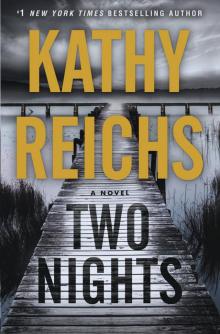 Two Nights
Two Nights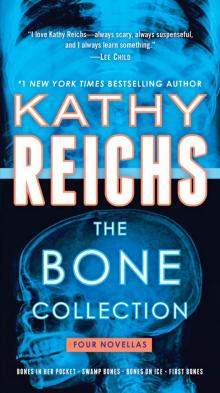 The Bone Collection: Four Novellas
The Bone Collection: Four Novellas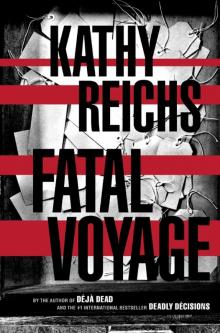 Fatal Voyage
Fatal Voyage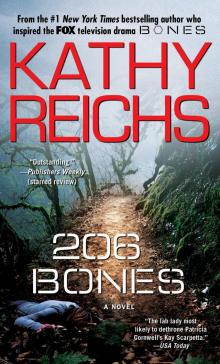 206 Bones
206 Bones Bones to Ashes
Bones to Ashes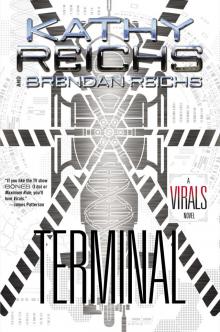 Terminal
Terminal Monday Mourning
Monday Mourning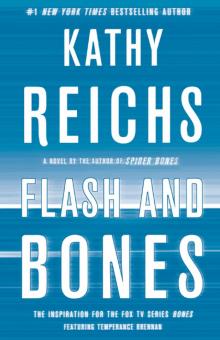 Flash and Bones
Flash and Bones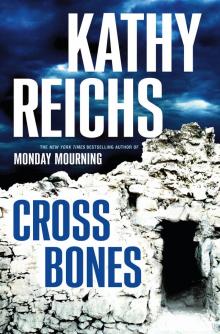 Cross Bones
Cross Bones Devil Bones
Devil Bones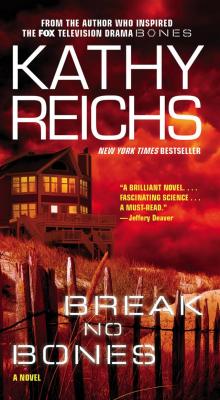 Break No Bones
Break No Bones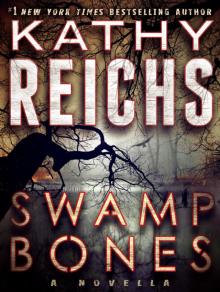 Swamp Bones
Swamp Bones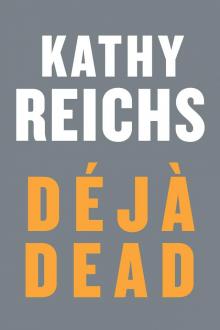 Déjà Dead
Déjà Dead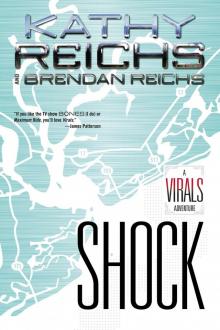 Shock
Shock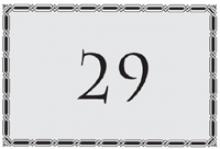 Spider Bones
Spider Bones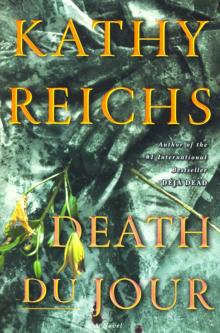 Death Du Jour
Death Du Jour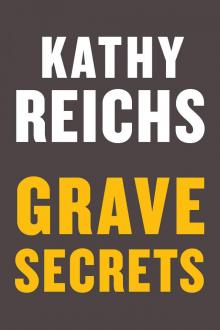 Grave Secrets
Grave Secrets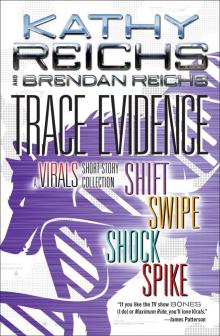 Trace Evidence: A Virals Short Story Collection
Trace Evidence: A Virals Short Story Collection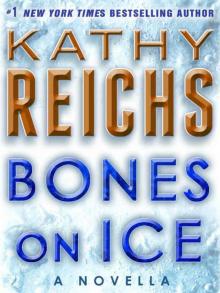 Bones on Ice
Bones on Ice The Bone Code
The Bone Code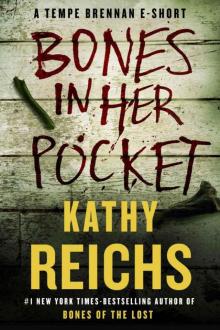 Bones in Her Pocket
Bones in Her Pocket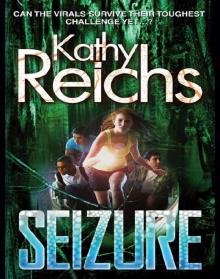 Seizure:
Seizure: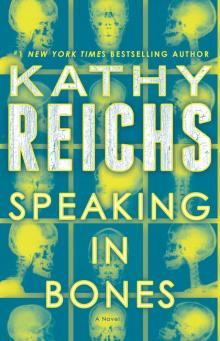 Speaking in Bones
Speaking in Bones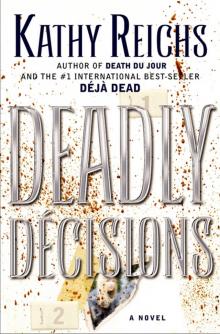 Deadly Decisions
Deadly Decisions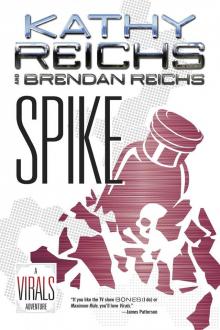 Spike
Spike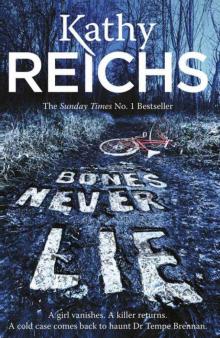 Bones Never Lie
Bones Never Lie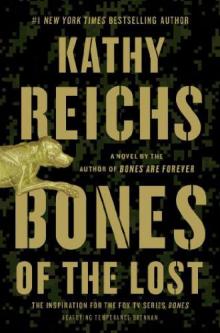 Bones of the Lost
Bones of the Lost Virals 03.5 - Swipe
Virals 03.5 - Swipe Exposure
Exposure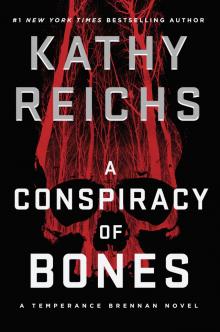 A Conspiracy of Bones
A Conspiracy of Bones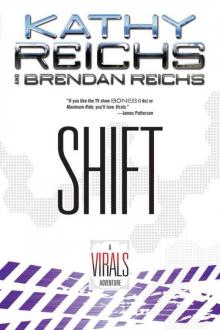 Shift (tory brennan)
Shift (tory brennan)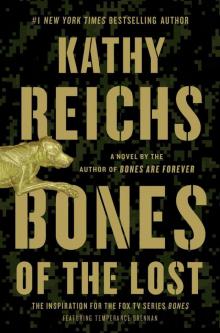 Bones of the Lost: A Temperance Brennan Novel tb-16
Bones of the Lost: A Temperance Brennan Novel tb-16 Virals tb-1
Virals tb-1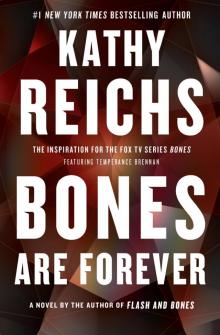 Bones Are Forever tb-15
Bones Are Forever tb-15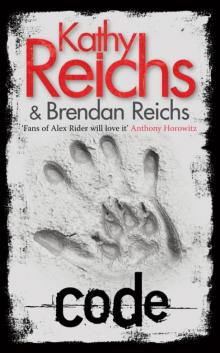 Code tb-3
Code tb-3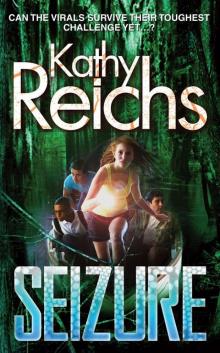 Seizure tb-2
Seizure tb-2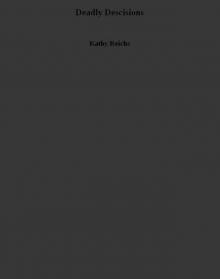 Deadly Descisions
Deadly Descisions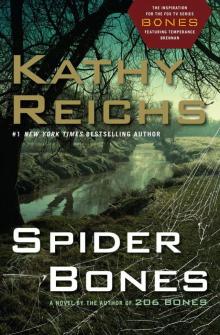 Spider Bones: A Novel
Spider Bones: A Novel